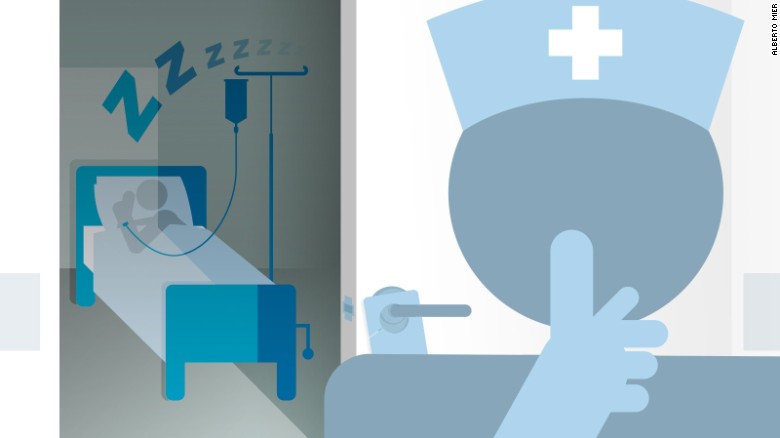
A while back, I wrote a piece on the problems caused when hospitals don’t coordinate care in a way that promotes patient sleep. Now Shefali Luthra, a reporter at Kaiser Health News, has written a great piece, delving deeper into this issue. Here is the beginning of that story:
Hospitals are reviewing their patient-sleep policies and starting to make changes.
It’s a common complaint — if you spend a night in the hospital, you probably won’t get much sleep. There’s the noise. There’s the bright fluorescent hallway light. And there’s the unending barrage of nighttime interruptions: vitals checks, medication administration, blood draws and the rest.
Peter Ubel, a physician and a professor at Duke University’s business school, has studied the rational and irrational forces that affect health. But he was surprised when hospitalized at Duke — in 2013 to get a small tumor removed — at how difficult it was to sleep. “There was no coordination,” he said. “One person would be in charge of measuring my blood pressure. Another would come in when the alarm went off, and they never thought, ‘Gee if the alarm goes off, I should also do blood pressure.'”
“From a patient perspective,” he added, “you’re sitting there going, ‘What the heck?'”
As hospitals chase better patient ratings and health outcomes, an increasing number are rethinking how they function at night — in some cases reducing nighttime check-ins or trying to better coordinate medicines — so that more patients can sleep relatively uninterrupted.
The American Hospital Association doesn’t formally track how many hospitals are reviewing their patient-sleep policies, though it’s aware a number are trying to do better, said Jennifer Schleman, an AHA spokeswoman.
And, though few studies specifically link quality of shut-eye and patient outcomes, doctors interviewed said the connection is obvious: patients need sleep. If they get more of it, they’re likely to recover faster.
Traditionally, hospitals have scheduled a number of nighttime activities around health professionals’ needs — aligning them with shift changes, or updating patient’s vital signs so the information is available when doctors make early morning rounds. Both the sickest patients and those in less serious condition might get the same number of check-ins. In some cases, that can mean patients are being disturbed almost every hour, whether medically necessary or not.
(To read the rest of this article, please click here.)
